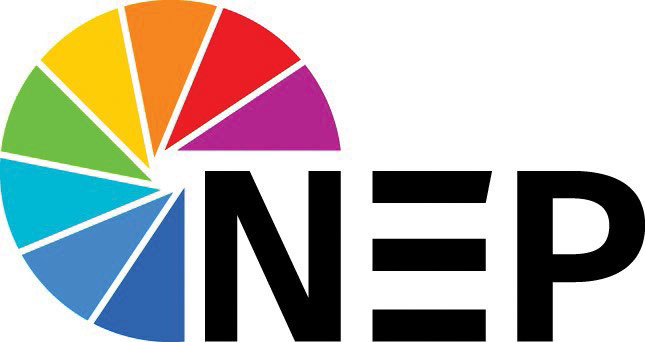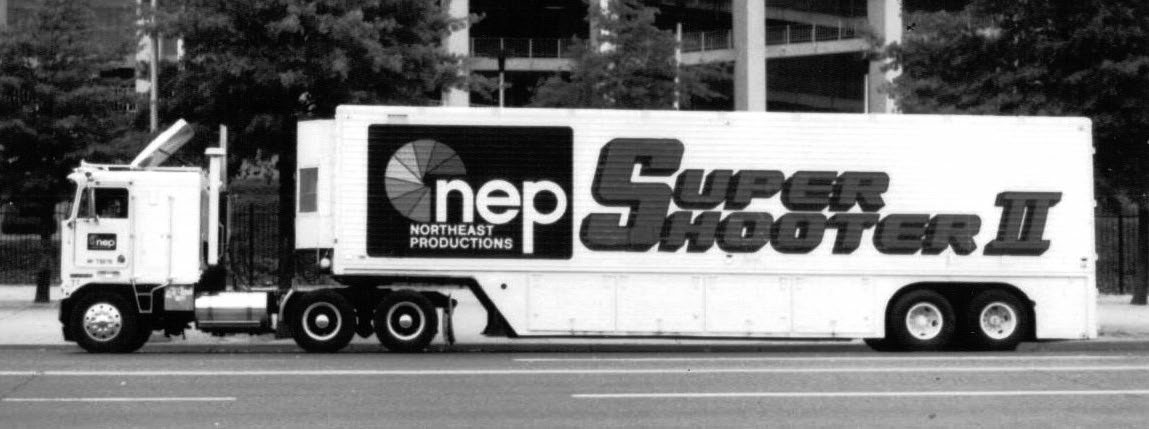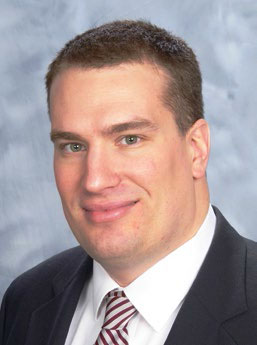NEP: 35 Years of Live Television Production
PITTSBURGH—Call it an outside broadcast, a remote, a field telecast, or live event coverage, the origination of programing from outside the confines of a television studio had been part of the medium since the commencement of regular TV broadcasting schedules in the 1930s. The viewing of such activities as boxing matches, ball games, beauty pageants, parades, political conventions, and the like as they happen and from where they are happening has always held a certain fascination for the public; an experience different from that in carefully planned and orchestrated studio productions, especially those that are recorded and heavily post-produced.
One of the largest of those entities making possible such outside broadcasts is the NEP Group (formerly NEP Broadcasting LLC), a Pittsburgh-based organization that has grown by leaps and bounds since its rather humble beginnings more than three decades ago, when it took to the road with a single remote truck, and operated as an adjunct to a TV station serving northeast Pennsylvania.
HOW IT ALL STARTED

Mike Werteen, global president of NEP Broadcast Services, recalled the live production giant’s rather inauspicious startup.
“Towards the end of 1978, Tom Shelburne built the first mobile production truck for WNEP, an ABC affiliate located in Wilkes-Barre, Penn.,” he said. “The truck’s first show was an NCAA women’s basketball game at Penn State University, covered for TCS [Total Communications Systems], WNEP’s first client.”

This first truck—later dubbed “Sharpshooter 1”—would become NEP’s entryway into the sports broadcasting arena, transitioning from pickups of Penn State games for TCS to coverage of a variety of other sporting events. In the 1980s, NEP acquired the holdings of TCS and relocated to Pittsburgh. (Present-day trucks are still “Supershooters,” but this is usually shortened to “SS—”SS18” or “SS21.”)
Fast forward 35 years, and NEP is now the definitive name in live production, not only in the United States, but globally, with offices in two dozen countries and nearly 4,000 employees. And while live event coverage is still its forte, the company also offers services in system integration, ENG, visual special effect creation, post production, playout, media management, and more. To get an idea of the overall scope and reach of NEP’s operations, the organization has produced television coverage of live events in more than 80 countries spread across all seven continents.
The professional video industry's #1 source for news, trends and product and tech information. Sign up below.
THE PATH TO THE TOP
Asked about the NEP’s meteoric growth, Werteen said that the event which really spawned the company’s pathway to the top came in 1995 when it negotiated the purchase of NBC’s mobile production fleet. This set the stage for a pattern of television production-related acquisitions that has continued well into the 21st century.
“It has been steady, focused growth since then,” said Werteen. “Our growth outside of the U.S. started in 2005 when we acquired Visions and Roll to Record in the U.K. [now NEP UK], adding Global Television in Australia [now NEP Australia] in 2014, and adding major players in Europe and Asia Pacific in 2015 and 2016.”
These included Mediatec Broadcast (now NEP Europe), Broadcast Solutions (now known as NEP Broadcast Solutions), Dutch View (now NEP the Netherlands), as well as Mediatec Solutions and Infostrada].
“We have a phenomenal team around the world,” Werteen said. “All of our acquisitions have been a tremendous fit for us both business-wise and culturally. I am really proud of the dedication, integrity and ingenuity of our teams around the world.”

NEP’s most recent acquisition occurred late last year when it acquired Baltimore-based Broadcast Sports International, a Baltimore-based designer and manufacturer of wireless networks and high-end wireless A/V systems. “We’ve worked alongside BSI’s team for years and share a great deal of respect for their high-quality work and technology,” said Werteen.
When asked to comment on just how large a presence in the live production market NEP has, Werteen provided the following statistics:
“NEP has roughly 3,900 employees worldwide. We have 160-plus OB trucks on the road, 45 broadcast production flypacks, and a total of 44 studios and control rooms around the world. We have around 95 offices with operations in 24 countries. We have supported events in 87 countries to-date. We are a truly global company.
“We really pride ourselves in being able to support our clients as a trusted partner offering truly local service, backed by the full depth and scale of NEP’s resources, virtually anywhere they need to go.”
NEP’s expansion has also led the company into developing products for related areas.
“We have teams that have developed really innovative media solutions, including Mediabank [NEP’s cloud-based media asset management service],” Werteen said. “Our live events teams [Screenworks, Sweetwater, CT, Mediatec, Faber and Big Picture], collectively have around 40,000 square meters of LED product and 45 mobile LED screen trucks, as well as other display, projection, audio, rigging and lighting solutions.”
LOOKING FORWARD
With such an enormous footprint, are there any “worlds left to conquer” for NEP, and with the now-universal low-cost video capture, production tools, available to virtually anyone, coupled with the global distribution channel that the internet provides, Werteen was asked if there were any new directions that NEP might be taking.

“NEP is distribution-agnostic, so no matter what the technological advance or any evolution of distribution methods, we feel good about our role in helping clients deliver live production,” he said. “Distribution offerings have evolved over the past 40 years. Technology has advanced over the past 40 years. NEP has stayed relevant because we focus on the technological fundamentals that are important to us. We focus on staying ahead of the technology discussion, making sure advances are relevant and reliable. We focus on making sure technology advances meet a valid business case. Once those criteria are met, we focus on innovating or acquiring solutions.”
Asked if there were any new goals or targets in mind for the company, Werteen responded in the negative stating, “The only goals we concentrate on are servicing our clients and supporting our employees.”
Stinehour: NEP’s Growth ‘Mind-Boggling’

NEP’s influence in the world’s live television production market is the result of strong management skills and its ability to quickly integrate its expanding roster of acquisitions, according to Josh Stinehour, principal analyst at Devoncroft Partners LLC, a media technology sector research firm.
“NEP is almost the closest thing we have in our industry to ‘too big to fail,’” said Stinehour. “They’ve gotten so large that I don’t know that we could replace them if they disappeared, at least not without some huge wrenching in the industry.”
Stinehour credits NEP’s phenomenal growth to “strong operational and financial management,” and referred to the company’s business acumen in acquiring and bringing together, through mergers and acquisitions, the numerous live event production entities it now owns and operates has as “mind boggling.”
“Since 2012, NEP has made almost 30 acquisitions.”
So, just how big is big? Stinehour doesn’t even want to speculate about what would happen if NEP were to suddenly disappear from the live production scene.
“If you [conducted] an academic experiment and you had NEP shut their doors and mothball their equipment, it’s not clear to me that there’s enough slack capacity in the rest of the industry to continue on, at least not without major disruption,” he said. “They are truly that big and all-encompassing when you consider all the live events that they touch.”
He also offers high marks to NEP’s managerial skills for achieving a great degree of balance and stability in a market sector that is constantly in flux.
“For the most part they tend to surge and contract-–and I use those words broadly—at least in revenue terms—around the major events and where they are happening in the world,” said Stinehour. “They were very busy in Korea earlier in 2018 and very busy with the World Cup. They are going to track the major events and they’re going to have very good years, but then they have to manage the resulting drawdown when the big events aren’t taking place.”
He noted that in connection with this, NEP has been diversifying its range of activities to include other live events such as concerts or corporate events along with the sports pickups that have the company’s “meat and potatoes” business for a long time.
“It will be interesting to see how they fare in these markets,” he said. “Those markets have different dynamics than large sporting events like the Olympics and the World Cup.”
James E. O’Neal has more than 50 years of experience in the broadcast arena, serving for nearly 37 years as a television broadcast engineer and, following his retirement from that field in 2005, moving into journalism as technology editor for TV Technology for almost the next decade. He continues to provide content for this publication, as well as sister publication Radio World, and others. He authored the chapter on HF shortwave radio for the 11th Edition of the NAB Engineering Handbook, and serves as contributing editor of the IEEE’s Broadcast Technology publication, and as associate editor of the SMPTE Motion Imaging Journal. He is a SMPTE Life Fellow, and a member of the SBE and Life Senior Member of the IEEE.

